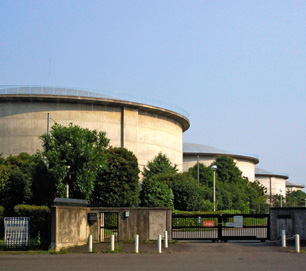Chloroacetones (1,1-Dichloroacetone and 1,3-Dichloroacetone)

A water purification plant in Tokorozawa, Japan. Chloroacetones may form as byproducts of water disinfection involving chlorine.
Chloroacetones (1,1-Dichloroacetone and 1,3-Dichloroacetone) are organic chemicals used in the manufacture of drugs, perfumes, insecticides and other chemicals. They're also potent tear inducers, and have been proposed for use in chemical warfare.
Dichloroacetones can form as byproducts of water disinfection involving chlorine, when large organic molecules are present. A study published by the American Water Association reports that 1,1-dichloracetone was detected in several water treatment plants in the United States.
Health Effects of Chloroacetones
Studies of chloroacetones are limited, but 1,1-dichloroacetone has been shown to have toxic effects on the liver, and some chloroacetones were shown to be mutagenic in bacterial studies.
Water Treatment for Chloroacetones
There is no recommended water treatment for chloroacetones. It is likely that their formation may be prevented during water disinfection by the removal of organic precursors.
Sources: TOXNET, WHO, Photo: WikiMedia, author: tokoro koko
Site Index
Filtration Systems
- Aeration for Iron & Sulfide
- Backwashing Filters
(whole house & well units)
- Chlorine & Chemical Injectors
- Countertop Water Filters
- Garden Hose Filters
- Reverse Osmosis, Residential
- Reverse Osmosis, Commercial
- Shower Filters
- Specialty Filters
- Ultraviolet Systems
- Undersink Filters
- Water Softeners
- Whole House Filters
Cartridges
Parts
- Replacement Parts
- Faucets
- Filter Media
- Fittings
- Housings
- O-rings
- Pumps
- Pura UV
- R.O. Parts
- R.O. Tanks
- R.O. Booster Pump
- VIQUA UV